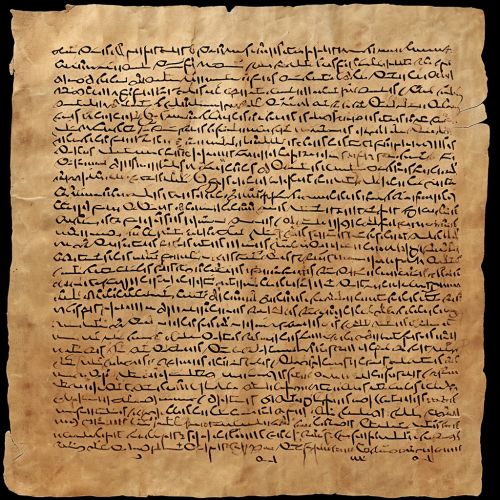Glagolitic alphabet
Introduction
The Glagolitic alphabet is the oldest known Slavic script, with its origin traced back to the 9th century. The alphabet was created by the brothers Cyril and Methodius, Byzantine Christian missionaries from Thessaloniki. The Glagolitic alphabet was used for the transcription of Old Church Slavonic, the liturgical language of the Slavic peoples in the Middle Ages.
Origin and Development
The Glagolitic alphabet was created around 863 AD by Cyril and Methodius, who were sent by the Byzantine Emperor Michael III to Great Moravia to spread Christianity among the West Slavs. The alphabet was intended to translate liturgical books into Old Church Slavonic, which was understandable to the common people. The name "Glagolitic" comes from the Old Church Slavonic word glagolŭ, which means "utterance".
The Glagolitic alphabet is believed to have been based on the Greek alphabet, with some letters borrowed from other alphabets such as the Coptic and Armenian. The alphabet consists of 38 letters, each with a unique shape and sound. The letters are divided into three groups: vowels, consonants, and special characters for numerical values.


Structure and Characteristics
The Glagolitic alphabet is unique in its design. Unlike the Greek and Latin alphabets, which are primarily linear in their design, the Glagolitic alphabet is characterized by its complex, geometric shapes. The letters are composed of straight lines and circles, with some letters resembling Christian symbols such as the cross.
The Glagolitic alphabet is written from left to right. It includes both upper and lower case letters, with the upper case letters used at the beginning of sentences and for proper nouns. The alphabet also includes punctuation marks such as the period, comma, and question mark.
Usage and Influence
The Glagolitic alphabet was widely used in Great Moravia and the Balkan Peninsula, especially in Croatia, where it remained in use until the 19th century. The alphabet was used to write religious texts, legal documents, and personal correspondence.
The Glagolitic alphabet had a significant influence on the development of the Cyrillic alphabet, which is used by many Slavic languages today. The Cyrillic alphabet was developed by the disciples of Cyril and Methodius, who simplified the Glagolitic script to make it easier to write and read.
Legacy
The Glagolitic alphabet is of great historical and cultural significance. It represents the earliest known Slavic script and played a crucial role in the spread of Christianity among the Slavs. The alphabet is also a testament to the linguistic and cultural diversity of the Slavic peoples.
Today, the Glagolitic alphabet is studied by linguists, historians, and scholars of Slavic studies. It is also preserved in monuments, manuscripts, and inscriptions in many countries, especially in Croatia, where it is considered a national cultural heritage.
